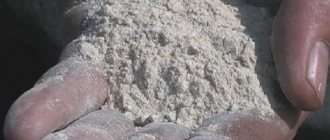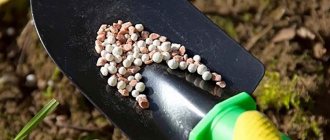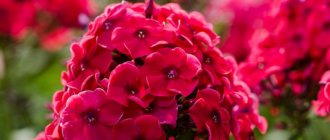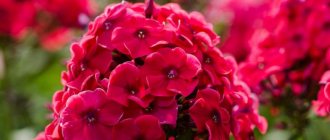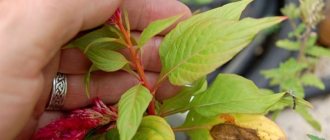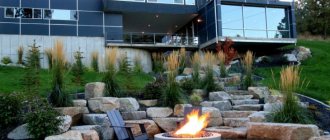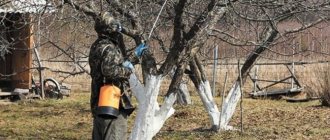How to fertilize the soil in the fall if there is no manure? Many summer residents ask this question. After all, autumn is the ideal time to apply fertilizers. In winter, the soil rests, and all the organisms that are in it allow the beneficial components to be processed. In addition, applying fertilizers in the fall allows you to prepare your garden for spring.
Synthetic or natural fertilizers in the fall
After harvesting, it is necessary to prepare the soil for the next season. However, not all summer residents know how to fertilize the soil in the fall if there is no manure? Some people think that it is better to use several complex mixes at once. Some people, on the contrary, recommend using various fertilizers separately. This is the wrong approach. After all, some natural and synthetic additives can lose most of their beneficial properties during the winter.
Latest articles about gardening
How to grow large carrots How to grow large garlic in the garden
To use fertilizers correctly, you need to know exactly which one can be applied to the soil in the fall, and which one should be left until spring. In addition, it should be noted that not all supplements are universal. Some can only be used on trees, while others can only be used on soil intended for planting vegetable crops.
BIOHUMUS IS A PRODUCT OF ORGANIC PROCESSING BY EARTHWORMS
This type of organic fertilizer does not pollute the soil with nitrates and contains a lot of humic acids, which are created by the digestive tract of eukaryotes. Red Californian worms are best suited for this purpose.
To prepare, just mix the soil with green manure or weeds, add fruit or vegetable waste and add worms to the mixture. In order for them to effectively process compost and reproduce, it must always be moist. Feed should be added as needed.
2 liter jars of vermicompost replace 50 kg of manure. In addition, the method is not labor-intensive and does not require the constant presence of people. Worms mainly work in the upper part of the pile, as they move there for a new portion of food.
A door is made at the bottom of the box to use the ready-made substance. The process lasts 4 - 5 months - this is much faster than real compost using horse manure, which burns out faster than all other types.
Benefits of vermicompost:
- in price - this is the cheapest type of organic fertilizer;
- in labor costs;
- in shelf life - vermicompost retains its beneficial properties for 1.5 years - during this time the amount of nutritional components in manure is reduced by 75%;
- in the amount of nutritional components - there is 9 times more humus in the substance than in horse manure, and even more so in cow or pig manure.
Video: Profitable manure replacement
When creating vermicompost, it is necessary to monitor the ambient temperature. California worms do not tolerate low temperatures.
Bird droppings for fertilizer in autumn
Bird droppings have long been used to fertilize plants and improve soil quality. It contains a large number of elements beneficial to plants. These are cobalt, boron, zinc, sulfur, magnesium. In addition, there are various acids, phenols and sulfides. In this case, phosphorus compounds do not release phosphates. Its main advantages:
- Bird droppings are pure organic fertilizer.
- Useful elements are in a form convenient for soil and plants.
- The substance quickly dissolves in water.
- Easy to digest.
- It does not have an unpleasant odor because it does not contain ammonia.
- Has a prolonged action. It continues to work for three years after application.
- Can be used on any soil.
- The undiluted solution can be stored all summer.
- The amount of droppings is equal to the weight of the feed that the chickens eat.
- Chicken owners receive fertilizer almost free of charge.
- The use of chicken manure improves the condition of the soil, its chemical composition, and promotes the proliferation of beneficial bacteria. It increases the yield. The percentage of dry matter in fruits and roots increases by 10 percent. It makes beets sweeter. Increases plant resistance to disease.
Green manure
Green manures are an excellent substitute for organic fertilizers; you just need to consider what crops will be planted after them. Green manure is sown immediately after harvesting - at the end of August or September.
Table: use of green manure
| Green manure | The resulting effect of application | What can you plant after it? |
| Legumes (vetch, peas, lupine, alfalfa, clover). | Enrich the soil with nitrogen in an easily accessible form. | Solanaceous (potatoes, tomatoes, eggplants, peppers), cruciferous (cabbage, radishes) and pumpkin (cucumbers, zucchini, pumpkin) crops. |
| Buckwheat. | Reduces soil acidity, enriches with phosphorus and potassium. | All crops except rhubarb, sorrel and spinach. |
| Cereals (oats, rye, barley). | They increase the nitrogen and potassium content, increase air and moisture permeability, and repel nematodes. | Nightshade and pumpkin. |
| Cruciferous vegetables (mustard, rapeseed, Shrovetide radish). | They increase the content of potassium and phosphorus, help get rid of nematodes, slugs and wireworms. | Nightshade, pumpkin, umbelliferous (carrots, dill). |
Video: green manure in autumn
Should I use ash in the fall?
Many owners of their own garden know that for normal crop growth and for its increase, soil rich in minerals and microorganisms is required. To prevent such depletion from occurring, the soil needs constant replenishment with fertilizers. Fertilizers increase the amount of nutrients for plants in the soil. There are many different fertilizers from natural to chemical. As a rule, ordinary gardeners and gardeners prefer to make do with affordable and proven fertilizers, such as ash or manure. And if manure is an excellent source of nitrogen for fertilizing the soil, then ash as a fertilizer is, first of all, a source of a huge amount of minerals that plants need so much. It contains especially a lot of potassium. The iron, calcium, sulfur, zinc, magnesium and many others contained in the ash ensure easy absorption by plants and significantly improve their growth and productivity. In general, ash has been used as a fertilizer by people since ancient times. Surely, everyone who has ever seen a field of dry grass burnt out in the fall has noticed that on such soil in the spring the grass grows thicker and faster. This is the result of the action of ash fertilizers, which fall into the ground after the combustion of old plants. The same effect can and should be achieved for cultivated fruit plants in ordinary gardens. By adding ash to the soil, gardeners significantly accelerate plant growth and thereby ensure a larger harvest. And what, if not homegrown tomatoes or cucumbers, will please and reward the gardener for his hard work and care!
How to improve the soil for the new season without manure according to the advice of Sergey Galkin
Clay soils are turning...clayey soils are turning...into fertile black soil! But how? The mentor of the Children's Farmer School of the AGRO XXI portal talks about this in his article
As everyone knows, we also know at the Farmer Children's School of the Agro 21 portal, an old Russian proverb says - prepare a sleigh in the summer, and a cart in the winter. And it’s not even winter anymore, but quite spring, both according to the calendar and the temperature, and the birds are chirping like spring.
The main thing that we must prepare for the new agricultural season is our breadwinner, the earth, or, in scientific terms, the soil. And the soil in our non-black earth region is mostly heavy, loamy, and clayey.
From time immemorial, our people have been accustomed to flavoring our soils with manure, but in modern times, dealing with manure, especially for summer residents, is difficult - it’s difficult to get, and expensive to buy, and it’s problematic to bring it in and mix it with our clays - it’s hard.
In addition, with manure, not only and not so much nutrients enter our soil, but weed seeds and pathogens of all kinds of diseases of garden plants.
The question arose in a classic way: to be or not to be?
And at the Farmer’s Children’s School we began to understand what literate farmers had known for a long time.
It turns out that our clays and heavy loams are no less nutritious than chernozems even without any manure. Look - both forests and meadow grasses grow on our clays, without any manure or mineral water, no worse than on black soils.
The problem is that in our soils nutrients are often present in sufficient quantities, but in forms that are inaccessible to plants. And soil microorganisms, bacteria, for whose active activity there is not enough air in the clay, are capable of converting soil nutrients from compounds inedible for plants into edible ones. In addition, most of the dry matter of any plants (up to 95%) is absorbed by plants from the air, and not at all from the soil, even though it is the most nutritious.
That is, in our heavy soils the only real deficiency is air deficiency. And our task in improving the soil is to improve its breathability. This is precisely what all our actions and all materials used should be aimed at. Both manure and all kinds of composts bring the greatest benefit not as suppliers of nutrients, especially since none of us know what is there and how much, but precisely as soil looseners.
Accordingly, to increase soil air permeability, not only organic materials are suitable - peat, sawdust, wood chips, bark and tree needles, but also inert materials - sand, perlite, and even crushed packaging foam...
In addition, loose, breathable soil is also a regulator of optimal humidity, that is, it does not become waterlogged, but retains existing moisture well and does not crust over after each rain or watering.
Our land purchasers, as a rule, receive fallow lands, that is, they have not been plowed for a long time or have never been plowed at all, and they begin by wasting effort, time and considerable money on digging, plowing and importing supposedly fertile land.
Firstly, it is not at all necessary to completely improve the entire area; it is possible (and not difficult, and not so expensive) to make the required number of bed-boxes and you don’t even need to dig anything under them.
Optimally – height 20-30 cm, width 90 cm, length – up to 20 meters.
And it is more rational to pack these boxes not with expensive fertile soil brought three-nine lands away, but with a substrate - a mixture of sand, sawdust, peat, chopped straw... This guarantees optimal moisture and air permeability, and the absence of weed seeds or rhizomes, and the absence of pests and pathogens of garden diseases plants.
In addition, such ridges warm up better, do not flood even in the rainiest periods, practically do not need weeding and loosening, and it is much more convenient to care for high ridges - without any negative consequences for our arthritis and radiculitis. Accordingly, the harvest ripens faster, in larger quantities, and of better quality than with traditional soil cultivation.
Well, if you regularly apply foliar fertilizing with Folirus preparations, then our vegetable beds will be a treat for everyone.
(Author: Sergey Galkin).
Is it possible to use phosphate rock in the fall?
Phosphorite flour is a mineral phosphorus fertilizer. Phosphorite flour is obtained by finely grinding phosphorites - sedimentary rocks formed mainly by minerals of the apatite group. Contains 19-30% P2O5 in the form of Ca3(PO4)2. Since calcium phosphate is slightly soluble in water, phosphate rock can be absorbed by plants only on acidic soils - podzolic and peat - in which Ca3(PO4)2 gradually turns into dihydrogen phosphate Ca(H2PO4)2•H2O, available to plants. The absorption of phosphate rock is facilitated by fine grinding, as well as its application to the soil together with acidic fertilizers, for example (NH4)2SO4 or manure. It is also used for preparing manure and peat composts. The main advantage of phosphate rock as a fertilizer is its low cost; It can also be noted that it is environmentally friendly and has a long aftereffect.
Water-soluble phosphorus fertilizers are more versatile: they can be used on both acidic and alkaline soils. Sparingly soluble phosphorus fertilizers (phosphorite and bone meal) are applied only on acidic soils (podzolic, gray forest, degraded and northern chernozems). The phosphorus of these fertilizers becomes available to the plant only after they are exposed to soil acid or acid secreted by plant roots and bacteria. These fertilizers are applied in advance and thoroughly mixed with the soil. When applied in higher doses, they provide plants with phosphorus for a number of years, longer than superphosphate. Phosphorus fertilizers, as is known, are fixed by the soil and do not penetrate down with water, so they are embedded deep into the soil - closer to the roots. They are brought in for deep processing (for digging, not for hoeing). The soil in the garden is dug up either in the fall or in the spring, and sometimes (more often) in both the fall and the spring. Depending on the timing of deep processing, the timing of applying phosphorus fertilizers also changes. If the soil is dug up both in autumn and spring, then sparingly soluble phosphorus fertilizers (phosphate rock) are applied in the fall, and superphosphate in the spring.
Latest articles about gardening
Fertilizer for cucumber seedlingsTulips: planting and care in open ground in spring
COMPOST – WHAT TO MAKE FROM
Almost all summer residents have fruits left on the ground that have fallen from the tree. Damaged fruits cannot be stored, but they are successfully used to make compost. After the autumn work of putting vegetables into jars, peelings and tops remain, which are also placed in the compost heap.
For compost to mature, it must be prepared correctly:
- Organize a pile and fence it with boards. The distance between them should be no more than 2 cm. Air is the main condition for fermentation inside the pile.
- Place a layer of earth or peat on the bottom. Sawdust will also work.
- Next, lay fruits, tops, green manure, and weeds in layers, alternating them with soil. To be on the safe side, you need to water everything with a solution of biological fertilizer so that the microorganisms get to work and begin to process organic matter.
After fermentation is complete, the compost will turn black and smell pleasantly like fresh earth. Wood ash, superphosphate and potassium salt can be added to it to increase the concentration of nutrients.
Compost is diluted with water and a liquid form of nutritional supplement is obtained, which can replace manure as fertilizer.
Organic fertilizer in autumn
Farm animal manure or poultry droppings are excellent for increasing soil fertility. This traditional fertilizer cannot be added fresh to plants, but in the fall it is an ideal fertilizer. When fresh waste products enter the ground, they begin to decompose and produce heat, so the root system of trees or shrubs can simply “burn out.” With the arrival of autumn, it is recommended to evenly spread manure (or droppings) over the area and immediately dig it up.
Compost or humus is a storehouse of useful elements for root vegetables, nightshade crops, onions, and all types of cabbage. Compost reaches its “mature” state in about a couple of years. A wide range of garden plants do not like unripe compost, but adding raw compost in the fall is quite appropriate, even encouraged.
Sawdust by itself has no significant value and is not a fertilizer. But their application makes the soil looser and helps subsequently retain moisture better. When sawdust rots, it becomes compost and also a source of food for earthworms and soil fungi. Sawdust is very good for autumn incorporation into the ground, but it should be added approximately once every 3 years.
Application of minerals
To form a rich harvest, organic matter alone is not enough. Mineral fertilizers for the garden contain not only basic nutrients, but also many microelements, so you cannot do without them. Each element performs its own functions.
Phosphorus is important for the rapid growth and development of crops . With its deficiency, fewer flower buds are laid and few ovaries are formed. Nitrogen fertilizers are necessary for the growth of underground and above-ground parts, especially leaves, thanks to which plants receive oxygen and evaporate moisture.
Boron is involved in carbohydrate metabolism and increases the absorption of calcium, iron is responsible for the processes of photosynthesis and respiration. Cobalt promotes rapid growth, and copper is part of enzymes and chloroplasts. During the period of fruit ripening, plants need to be fed with potassium fertilizers.
So all the substances are very important.
What plants is it suitable for?
Thanks to this fertilizing, there is no need to apply additional fertilizing in the spring. This fertilizer is suitable for potatoes. In the fall, compost is distributed throughout the site, and tubers are planted in the spring. Harvest dates are shifted by approximately 2 weeks. It is worth noting that this fertilizer is suitable for all early vegetable crops.
What fertilizers should be applied in the fall for fruit trees? Many people recommend using compost. After all, the garden also needs additional nutrition. It is worth noting that such a substrate is often used to protect the root zone of all fruit trees. To do this, compost is laid in a fairly thick layer around the entire diameter of the trunk. The fertilizer is left here until spring. When the first warm days arrive, the soil around the trunks must be carefully loosened. Thanks to such manipulations, the beneficial components contained in the substrate penetrate deep into the soil and begin to nourish the roots of trees and shrubs.
Harm to humans
There are also horror stories online about diseases that are caused by mineral soil amendments. Like any chemistry, mineral improvements contain all kinds of impurities, as well as chemicals. Minerals accumulate in plants, soil, soil and the human body, causing serious illnesses including cancer.
Of course, this may sound frivolous and far-fetched, but you must admit that any chemistry is unnatural for our body - it rejects it. For example, fertilizing the soil with chemicals such as copper sulfate or copper chloride, there is a risk of accumulating copper in your body! There is some kind of harm here, but the harm is obvious, there is nothing to deny.
Also, all plants, of all types, are very sensitive to copper; fertilized objects can develop diseases, developmental delays, deterioration of immunity, and much more. It is also worth remembering that any chemicals tend to accumulate and are not completely eliminated from the body, but “sit” in it, continuing to poison everyone from year to year until they accumulate in a critical amount. They result in nerve disorders, insomnia, diseases of the teeth, bones, skin, and blood.
Sweet clover
Sweet clover attracts pollinating insects to the site
There are several varieties and types of sweet clover that differ little in their characteristics - white, serrated, arctic, yellow.
Where to plant: on tired, poor soil of any mechanical composition, with an alkaline or neutral reaction. With regular planting, it gradually normalizes acidity and eliminates excess salt content in the soil.
This is a good predecessor for tomatoes, peppers, eggplants, potatoes, cucumbers, zucchini and garden strawberries.
Do not use in areas where powdery mildew raged last year, since the sweet clover itself is susceptible to it. But it is well suited for clearing the soil of wireworms and nematodes.
When to plant. In early spring, as soon as the snow cover melts and the soil dries out. In the second half of summer, sowing is carried out no later than August 10-15.
Features of care. Plants tolerate cold and drought well. But if there is a lack of moisture in the soil, it produces less greenery. Therefore, in hot summers it is advisable to carry out 3-4 waterings.
Seeding rate. 150-250 grams of seeds per hundred square meters.
Flaws
(adsbygoogle = window.adsbygoogle || []).push({});
The answer to all this is that mineral fertilizers are easy to use and odorless. But it’s inconvenient to work with manure, it stinks, it can contain weed seeds, infect with worms and be endowed with helminths, as well as other parasites, and ruin your health with nitrates. Of course, all this takes place, but it is too exaggerated. If used correctly and handled correctly, it is absolutely safe, nothing like this will happen. You just have to do everything right.
How to fertilize the soil for potatoes if there is no manure?
We offer several options for replacing fertilizing the soil with cow manure
1. a bucket of humus, 20 grams of ammonium nitrate, 20 grams of potassium sulfate, 40 grams of superphosphate, 450 grams of dolomite flour per 1 square meter.
2. a bucket of compost, 30 grams of nitrophoska, 20 grams of potassium sulfate, 20 grams of ammonium nitrate per 1 square meter.
3. 1 bucket of humus, 3 tablespoons of nitrophoska, 1 glass of ash per 1 square meter.
4. If green manure grows on the site, then along with planting the green mass it is enough to add 20 grams of ammonium nitrate, 20 grams of potassium sulfate per 1 square meter.
5. If there is a deficiency of organic matter, complex fertilizers are applied: nitrophoska at the rate of 5 kilograms per hundred square meters or nitroammophoska (3 kilograms per hundred square meters).
PEAT
Peat is organic material that has decomposed and formed in bogs. According to the place of formation, they are distinguished: lowland, upland and transitional.
When used in gardens, peat improves the structure of the soil, increases its acidity and breathability.
It is preferable to use peat as a fertilizer in compost pits, mixing it with ash, green manure, and nitrogen fertilizers. This compost is shoveled several times during the season. 20-30 kg of finished compost is used as fertilizer per 10 square meters. meters of garden land. We talked only about some of the organic mineral fertilizers that can be used as a manure substitute. They are united by safety of use, efficiency and low cost. Which one to use is up to you.
